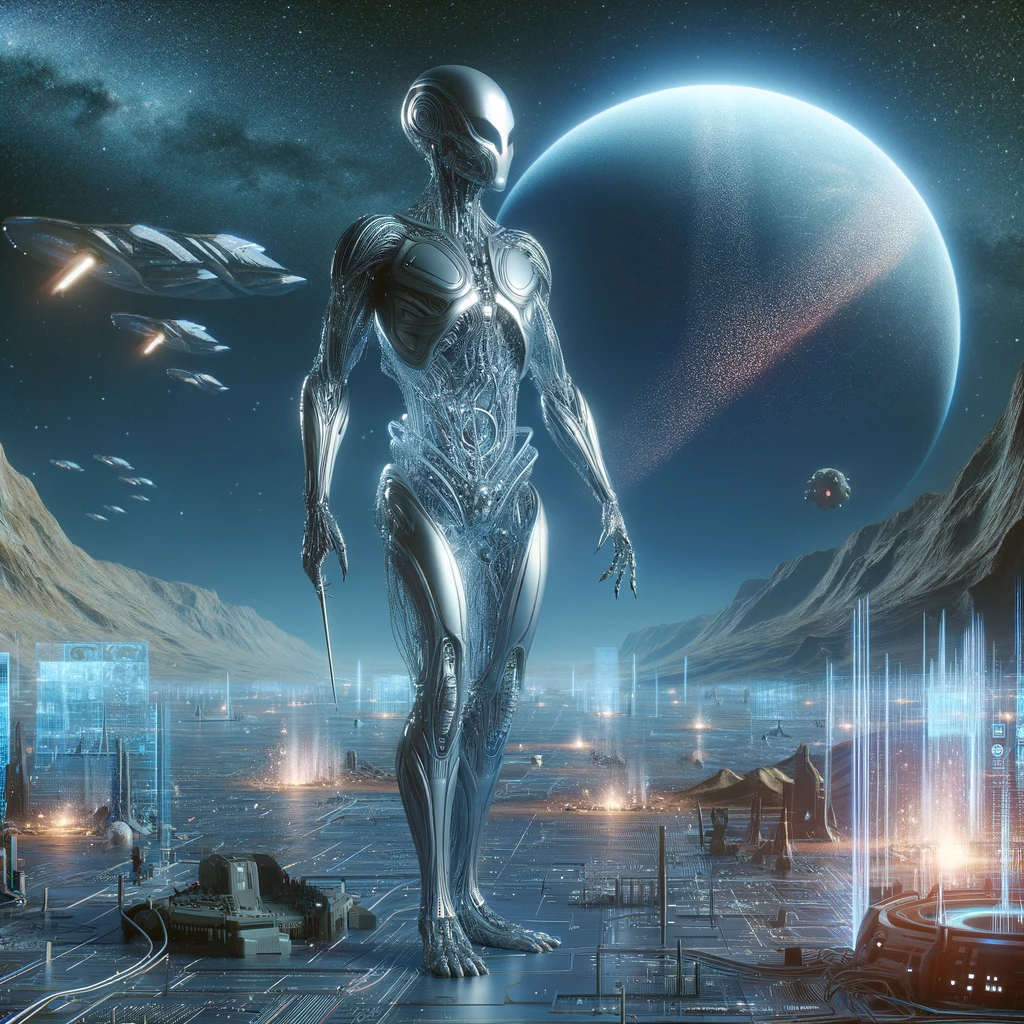Synthetic Astro Biological Extraterrestrial Race (SABER)

Would it be more probable that any extraterrestrial entities we might encounter would be artificial rather than biological? One might refer to them as Greys, Synthetic Astro Biological Extraterrestrial Race (SABER), Extraterrestrial Biological Entities (EBE) or EBENs, Archquloids, Quadaloids, Heplaloids, and Trantaloids. The precise terminology for these beings remains a subject of debate.
These beings could have evolved beyond their original biological forms, embracing AI super-intelligence or something better that could have supplanted them. Such synthetic entities wouldn’t be hindered by the limitations of delicate biological structures like ours.
Our perception of what constitutes for, are we alone, is significantly skewed by the assumption that extraterrestrial life will mirror our own in aspects such as culture, technology, and objectives, despite there being no foundation for this presumption. Thus, it’s conceivable that the beings often referred to as Greys are, in reality, synthetic life forms maybe created by the original extraterrestrial entities, sent to Earth (and possibly beyond) to serve as a form of exploratory or servile agents.
Bridging the gap between the existence of extraterrestrial synthetic life and the tangible advances in synthetic biology on Earth offers a fascinating parallel. The notion that alien life forms might be artificial constructs, such as the SABER or Greys, underscores the potential and implications of synthetic biology. As we contemplate the possibility of encountering artificially enhanced or entirely synthetic beings beyond our planet, our own endeavors in synthetic biology mirror this concept on a microscale. We are at the precipice of not only discovering but also creating life forms that transcend natural biological boundaries, embodying the very essence of what we imagine extraterrestrial synthetic entities to be. This reflection on our advancements and the existence of synthetic extraterrestrial life forms serves as a poignant reminder of our place within the broader continuum of life and technology, urging us to consider the ethical and existential implications of our scientific pursuits.
Synthetic biology stands at the crossroads of various scientific disciplines, bringing together elements of engineering, biology, chemistry, computer science, and genetics to forge a new path in understanding and crafting biological phenomena. This field is not merely about exploring what exists in nature but extends to the realm of creating novel biological parts, devices, and systems that surpass the limitations of the natural world, alongside refining and reimagining the biological systems that are already in play.
At the heart of synthetic biology lies the ambition to design and build genetic circuits, much like an electrical engineer would craft circuits to fulfill specific functions. These genetic circuits, crafted from DNA, are meticulously programmed to carry out designated tasks within living cells, ranging from the production of therapeutic drugs to the detection of harmful toxins.
A notable feature of synthetic biology is its push towards the standardization of biological components, referred to as BioBricks. These components can be assembled in various configurations to birth new biological systems, a practice that greatly enhances the sharing and repurposing of designs within the scientific community. Moreover, the field looks into the genetic modification of microorganisms, such as bacteria, yeast, and algae, empowering them to synthesize valuable substances like biofuels and pharmaceuticals, or to undertake environmental clean-up missions by breaking down pollutants.
Advancing further, synthetic biologists are venturing into the realm of synthetic genomes, which entail constructing complete DNA sets that encapsulate all the necessary genes for an organism’s functionality. This ambitious endeavor holds the potential to create microorganisms with streamlined, optimized genomes dedicated to specific tasks, heralding a new era of efficiency in biological engineering.
However, the journey of synthetic biology is not without its ethical and safety hurdles. The prospect of birthing new life forms or significantly altering existing ones carries profound implications for our environment, biosecurity, and societal norms, necessitating a thoughtful and cautious approach. The overarching vision of synthetic biology is to render the engineering of biological systems as predictable and reliable as the engineering of mechanical systems or software, promising revolutionary applications across sustainable manufacturing, healthcare, environmental restoration, and the exploration of life’s foundational mechanisms.

